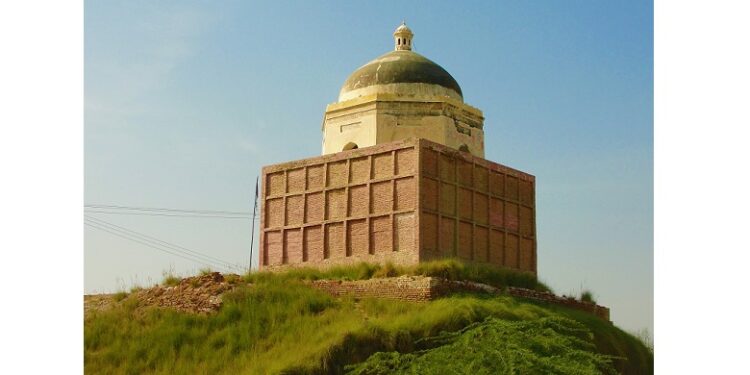
The ornamental lanterns can be classified into three types: true lantern, false lantern and imitation of the false lantern. A true lantern has arched openings whereas the false one has blind arched paneling. The third type is an imitation of the latter, which has no arched paneling and is accentuated by masonry lines making an octagonal lantern.
Zulfiqar Ali Kalhoro
Kalhora tombs are noted for their distinctive architectural elements. One of the most prominent features is an ornamental lantern which surmounts some of the domes of tombs from the Kalhora period (1700-1783). Generally, domes of Kalhora and Talpur tombs are surmounted with many and varied pinnacles. Some domes are surmounted with ornamental lanterns. These were for the first time introduced by the Mughals on domes of mosques in Sukkur and Rohri. Two prominent mosques of the Mughal period which received false ornamental lanterns include Majid Manzilgah at Sukkur and Mir Yaqub Rizvi mosque at Rohri.
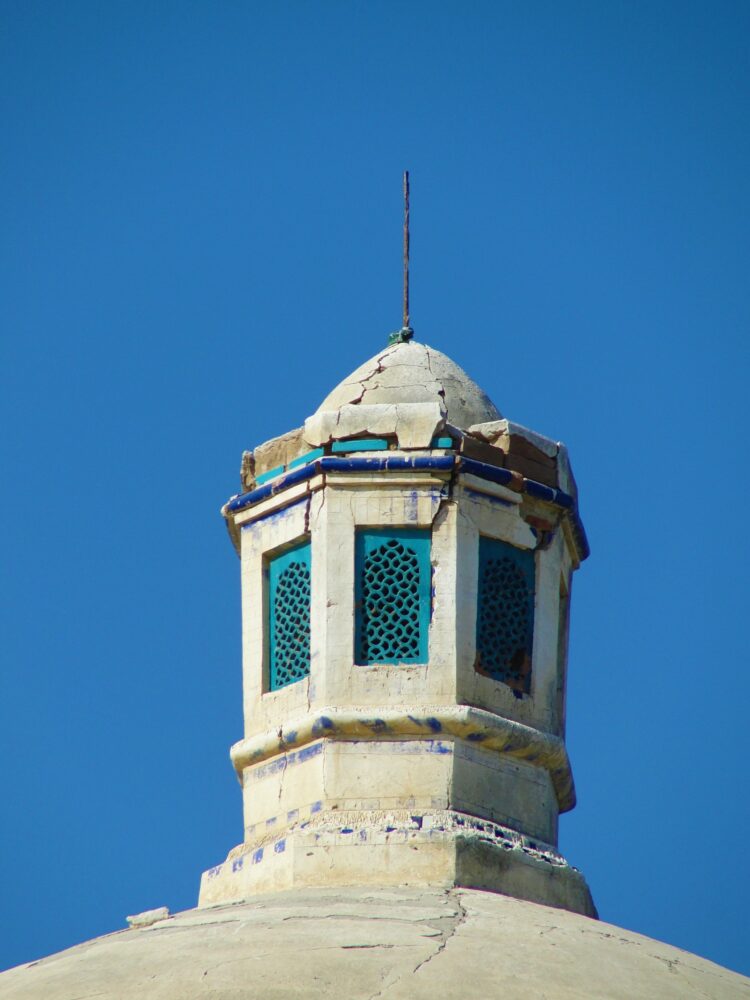
Broadly speaking, the ornamental lanterns can be classified into three types: true lantern, false lantern and imitation of the false lantern. A true lantern has arched openings whereas the false one has blind arched paneling. The third type is an imitation of the latter, which has no arched paneling and is accentuated by masonry lines making an octagonal lantern. The top of this lantern sometimes is in the form of a lotus bud or false miniature cupola which is locally called shamadan (lantern).
The two types of lanterns, true and false, have been provided on several tombs which are located in different parts of Sindh. All these lanterns are octagonal. Henry Cousens in Antiquities of Sindh (1998) appreciates the ornamental lantern and argues that “the lantern is a very unusual but pleasant feature, which improves the appearances of heavy-looking segmental domes.” Moreover, he believes that being octagonal and overlaid with colored enameled tiles, it has much the appearance of a Japanese lantern. Several domes on the tombs of the Kalhoras are surmounted with ornamental lanterns, especially those of Mian Noor Muhammad Kalhoro, Shah Baharo and three tombs of the Thahims at Dakhan. At present, there is no lantern over the dome of Mian Noor Muhammad Kalhoro, which may have been damaged and removed during the repair of the tomb.
All three lanterns of the Thahim tombs were broken. Recently however, the tombs have been renovated and the lanterns have also been repaired.
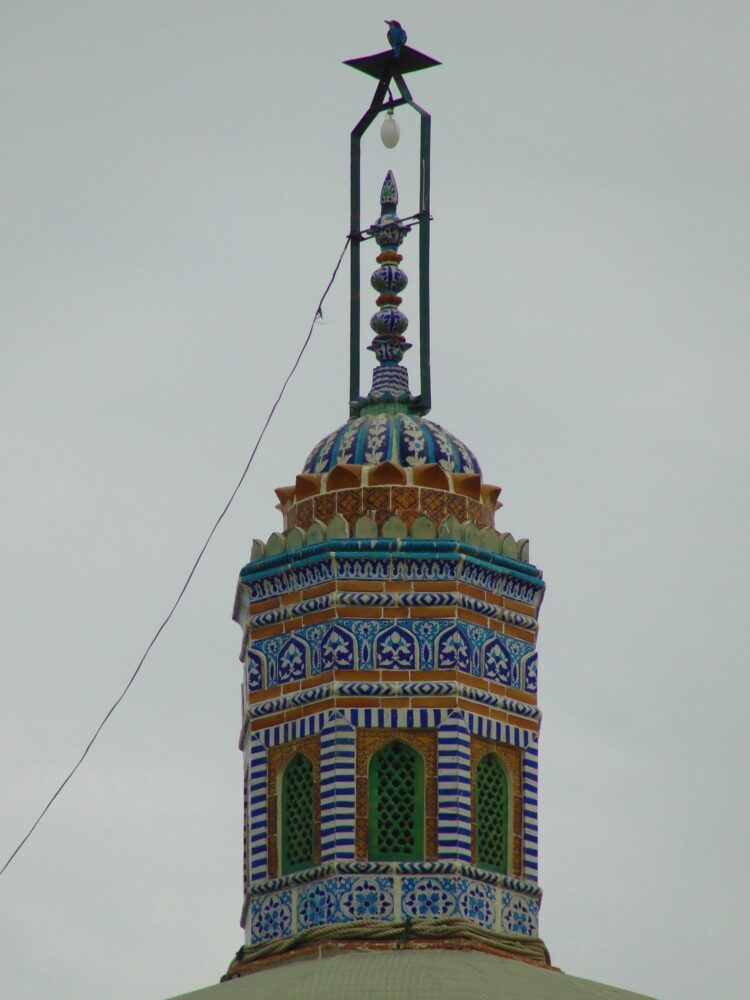
The tomb of Mangho Faqir was the first structure to receive the ornamental lantern which was built during the reign of Mian Yar Muhammad Kalhoro. Mango Faqir served Mian Din Muhammad Kalhoro and later Mian Yar Muhammad Kalhoro. Now the lantern is broken but its base is still extant. According to Henry Cousens, the Bhando tomb near Rato Dero, built in 1740 during the reign of Mian Noor Muhammad Kalhoro, is also surmounted with a lantern.
The most impressive true lanterns are found on the domes of Shah Baharo in Larkana, Jaral Shah near Tando Masti in Khairpur district and Shah Khairuddin in old Sukkur. The lantern of Shah Baharo has eight arched openings fitted with perforated glazed tile screens. The kalasa over the lantern is now missing. The photo which Cousens took in 1922 showed a beautiful kalasa over a lantern. There were also glazed tiles on the lantern, which are missing.
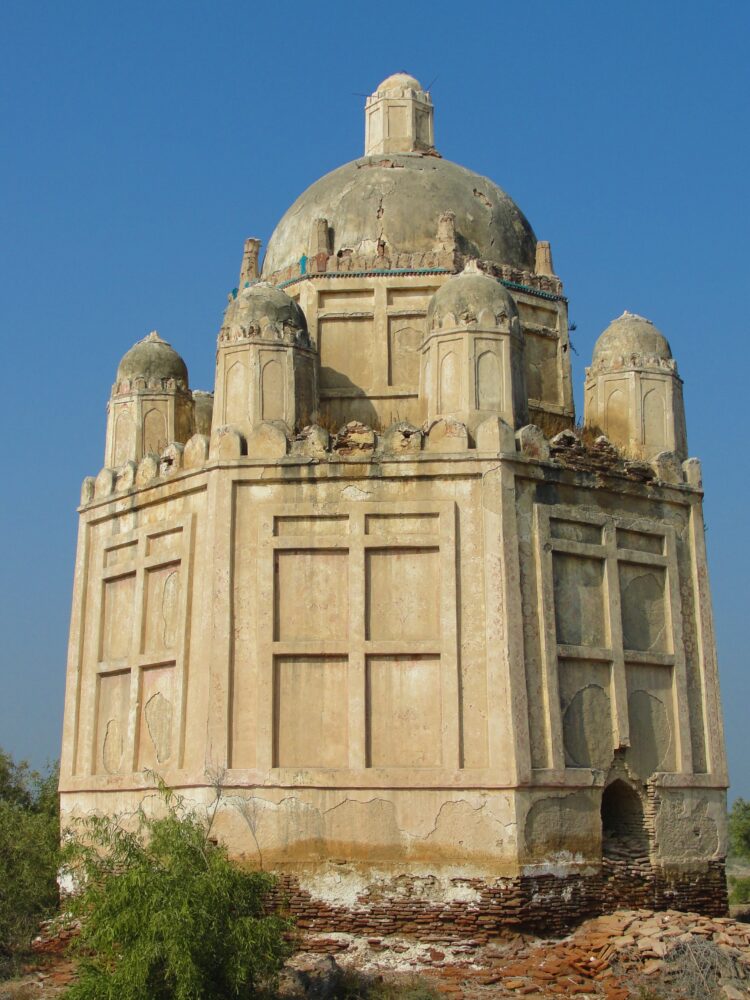
Another elegant lantern, similar to the one on Shah Baharo’s tomb, is that of Shah Khairuddin. This tomb was built between 1165 A.H/1751 A.D and 1760 A.H 1174/1760 A.D. Therefore, it appears to have been erected either during the reign of Mian Noor Muhammad (1719-1753) or Mian Ghulam Shah (1757-1772). Like Shah Baharo’s lantern, it has also eight perforated panels with enameled tiles decorating the base. Interestingly, the cupola is also decorated with enameled tiles. The cupola of the lantern is topped by a finial. If one compares the tiles found on both the ornamental lanterns of Shah Baharo and Shah Khairuddin, one observes the similarity in the floral patterns on the base of both the lanterns. The same flower motif is found on the glazed tiles used in these lanterns and – on the base and the upper part of the lantern over the dome of Pir Sher near Larkana town. This tomb was probably erected during the British period.
There is another elegant lantern that surmounts the dome of Jaral Shah near Tando Masti in the Khairpur district. This tomb is also believed to have been erected by Ghulam Shah. This lantern falls in the category of a true lantern. It has perforated panels which are now fitted with glass, and also an octagonal lantern superimposed with a finial.
Apart from true lanterns, false lanterns are also used over the domes. The most impressive lanterns surmount the domes of Sakhi Dalel Rind at Jhanghara in Sehwan taluka in the district of Jamshoro and Qaim Khan Korai at the necropolis of Mian Noor Muhammad Kalhoro. These false lanterns are superimposed by a false cupola. The lantern over the dome of Sakhi Daleel is the most impressive – and bigger than Qaim Khan Korai’s tomb. There are seven false arches and one arched opening which is crowned with a false cupola. Similarly, the dome of Qaim Khan Korai also carries a huge lantern. Similar lantern-shaped turrets are found on each angle of the tomb corresponding to the lantern crowning the dome.
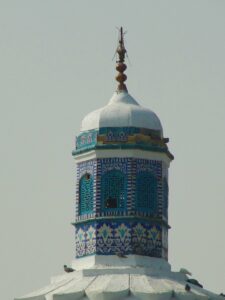
The third category of false lanterns can be seen on four tombs, two of Mir Allahyar Khan Talpur and Mir Saindad Khan Talpur, both in the necropolis of Mir Allahyar near Drigh Bala in Johi taluka in the Dadu district, and the third at the necropolis of Mian Noor Muhammad Kalhoro, which belong to Jalal Khan and Gahno Khan respectively. According to Syed Shakir Ali Shah in his book Nawabshah: The Lost Glory (2002), the dome of Gahno’s tomb is erected on an octagonal drum crowned with a thick finial or lantern). This is actually the lantern that falls in the third category as discussed above.
Lanterns first appeared on the domes of the Central Asian tombs. There are several tombs in Central Asia which carry ornamental lanterns. However, the most prominent tombs are those of Zubeda and Ubeda near the shrine of Astana Baba, Turkmenistan. According to History of Sultanate Architecture, a book by R. Nath (1978), this ornamental device made its way from Central Asia to India where it was first used on the dome of Sayyid Mubarak Shah at Delhi. According to Aspects of Indo-Islamic Architecture, a book by Subash Parhihar (1999), it was also used in the tombs of Poti (granddaughter) and Ustad at Sirhind in India. This is a very rare feature in India. But it was widely used in the Kalhora tombs. The Kalhoras popularized this ornamental device on their tombs and mosques in Sindh and later it continued during the Talpur period (1783-1843). It also continued to appear on the domes of mosques, tombs and even in buildings in the British Raj (1843-1947) in Sindh.
____________________
 Zulfiqar Ali Kalhoro is an anthropologist and author of 12 books including ‘Symbols in Stone: The Rock Art of Sindh’, ‘Perspectives on the art and architecture of Sindh’, ‘Memorial Stones: Tharparkar’ and ‘Archaeology, Religion and Art in Sindh’. He may be contacted at: zulfi04@hotmail.com
Zulfiqar Ali Kalhoro is an anthropologist and author of 12 books including ‘Symbols in Stone: The Rock Art of Sindh’, ‘Perspectives on the art and architecture of Sindh’, ‘Memorial Stones: Tharparkar’ and ‘Archaeology, Religion and Art in Sindh’. He may be contacted at: zulfi04@hotmail.com
Courtesy: The Friday Times Lahore